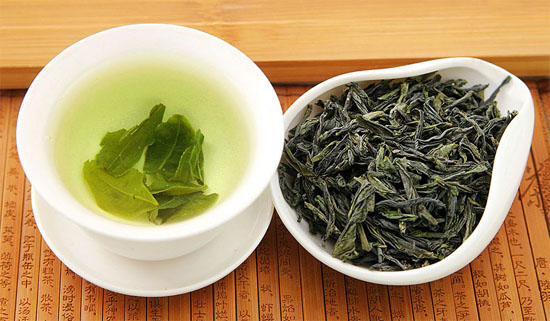Liu An Gua Pian is one of the top ten teas of China. Named after the tea leaves’ resemblance to a huge melon seed, Liu An Gua Pian is a unique type of green tea produced in Liu An County in Anhui Province.
Liu'an Guapian has a long history and rich cultural connotation. It was recorded in the Tea Classics as early as in Tang Dynasty; in Ming Dynasty, the famous scientist Xu Guangqi praised highly of the tea in his work Nongzheng Quanshu (Complete Collection of Writings on Agriculture) as "the Liu'an Tea Pieces is the masterwork among all teas"; in early Qing Dynasty, it was listed among the tributes to the emperor, while in modern times it was specified as a special tribute tea for the Central Military Commission, which was loved by our first premier of PRC Zhou Enlai until the end of his life; in 1971 during the first visit of the former U.S. Secretary of State to China, the tea was presented as a national gift to our foreign friends.

What sets Liu An Gua Pian apart is undoubtedly its shape. The tea leaves are significantly larger than most other green teas. They are shaped like a plump watermelon seed, a popular nut in China. But to Westerners, almond probably describes the shape better. The tea leaves are large and flat with a slightly curled edge. There are no stems in the leaves. Liu An Gua Pian boasts a bright emerald color, which is why it is also known as ‘ Liu An Emerald Pedal’. There is a very thin layer of white frost on the leaves but not obvious. Since Liu An Gua Pian is thoroughly fried after harvest, the raw leaves have a toasted smell. If they smell fresh instead, it is a sign that the frying was not done properly. But once brewed, the tea tastes sweet, crisp and refreshing, making it a great summer tea. Liu An Gua Pian is also a great antidote to indigestion and fatigue.
Liu’an Guapian, also called "Melon Seed", gets its name from the shape of the processed tea leaves. It is a special type of green tea and the only green tea in China that uses no stalks or buds in its production. After picking the bud and two leaves from the plant, the tea maker cuts the bud and any stem from the leaves, creating equal-sized single leaf pieces. These carefully cut leaves are then pan-fired over low heat, shaping the leaves into a melon seed shape and creating a tea with bright green colored leaves.
Brewed color: Yellow with green tint.
Flavor: Refreshing, green, vegetal, sweet almost, with a suggestion of seaweed.
Aftertaste: Subtle, lingering, but decided.
Preparation: For best results, use spring or mineral water. Bring it to a boil, then, after taking water off the heat, wait about 10 or 15 seconds before onto the side of the pot or gaiwan (avoid pouring on the leaves directly).

![Diseases, Symptoms, tcm, [tcmwindow.com]](/uploadFile/adImg/2015/11/11/f5cbfcc0-4df5-4646-9b9a-f316651a0199.jpg)





